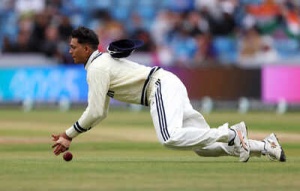The unexpected death of Indian actress Shefali Jariwala has sparked widespread concern and highlighted a worrying trend: the increasing incidence of sudden cardiac issues among women. While the official cause of Jariwala's death awaits confirmation, initial reports suggest a cardiac arrest, a phenomenon that is increasingly affecting seemingly healthy, middle-aged women.

Sudden cardiac death (SCD), once considered rare among young adults, is now a growing concern, particularly in India. Cardiovascular diseases account for approximately 28% of all deaths in India, with nearly 10% of these deaths attributed to SCD. A significant number of these fatalities occur in individuals between 30 and 50 years old.
India's rapid socioeconomic changes have led to widespread lifestyle changes, including:
These factors contribute to a rise in conditions like hypertension, obesity, diabetes, and coronary artery disease, all of which are major risk factors for SCD.
While historically more prevalent among men, recent studies highlight the unique risks faced by women. Unlike men, women who experience SCD often have no prior cardiac diagnoses. Structural abnormalities, such as myocardial scarring and ischemic heart disease, frequently go undetected until post-mortem examinations. Many women also do not exhibit classic warning signs like chest pain or ECG anomalies, making early detection particularly challenging.
Women in their 40s and 50s face a significant risk from underlying cardiac conditions. In younger populations, SCD is often linked to inherited or electrical disorders, including:
These conditions often remain asymptomatic until a fatal arrhythmia occurs.
In this age group, additional risk factors include left ventricular hypertrophy, obesity, and myocardial fibrosis. The progression of myocardial scarring and fibrosis with age can be attributed to:
Conditions like Myocardial Infarction with Non-Obstructive Coronary Arteries (MINOCA), which are more common in younger women, often leave no trace in autopsies, further complicating diagnosis.
Jariwala's life, beginning as a teen star, was marked by considerable stress. Takutsobo cardiomyopathy (Broken Heart Syndrome), or stress-induced cardiomyopathy, is a major cause of SCD in women who multitask and experience emotional stress. Jariwala also faced personal challenges, including divorce, anxiety, depression, and epilepsy, all of which can impact cardiovascular health. Psychiatric medications, especially those that prolong the QT interval, have also been linked to an increased risk of SCD.
Despite the severity of the problem, women remain underrepresented in preventive heart care. Symptoms such as fatigue, palpitations, or breathlessness are often dismissed or misattributed, delaying critical intervention. While heart attacks are caused by blocked arteries, cardiac arrest results from electrical disturbances that cause the heart to stop suddenly. Immediate CPR and defibrillation are often the only lifesaving measures, emphasizing the importance of early risk identification.
Medical experts are now advocating for more targeted public health strategies, including enhanced early screening tools tailored to women, particularly during perimenopause when cardiac risks increase.
The entertainment industry and fans mourn the loss of Shefali Jariwala. Her tragic death serves as a catalyst for change. Her passing underscores the often-overlooked health crisis of women’s heart health. It highlights the pressing need for a systemic change in how women's cardiac health is addressed.
Shefali was a star admired for her on-screen presence. Her untimely passing should be a symbol of awareness. Her legacy will remind us that the heart’s silence can be fatal, and that women's cardiac health demands immediate attention, investment, and action.
Newer articles
Older articles
 Bangladesh Test Captain Najmul Hossain Shanto Resigns After Sri Lanka Series Defeat
Bangladesh Test Captain Najmul Hossain Shanto Resigns After Sri Lanka Series Defeat
 SA20 Auction: Teams Can Retain Up to Six Players as Salary Cap Jumps to $2.3 Million
SA20 Auction: Teams Can Retain Up to Six Players as Salary Cap Jumps to $2.3 Million
 Android Users Urged to Patch Now: Critical Security Flaws Expose Devices to Attacks
Android Users Urged to Patch Now: Critical Security Flaws Expose Devices to Attacks
 X Cracks Down: Over Half a Million Accounts Suspended in India for Policy Breaches
X Cracks Down: Over Half a Million Accounts Suspended in India for Policy Breaches
 What Your Phone Grip Says About You: A Personality Test
What Your Phone Grip Says About You: A Personality Test
 India's Squad Trimmed: Pacer Released Ahead of Second Test Against England in Birmingham
India's Squad Trimmed: Pacer Released Ahead of Second Test Against England in Birmingham
 Vegetarian Power: 20 Plant-Based Protein Sources That Outperform Eggs
Vegetarian Power: 20 Plant-Based Protein Sources That Outperform Eggs
 ICC Test Rankings: Pant Hits Career High, Bumrah Stays on Top, Root Leads Batters
ICC Test Rankings: Pant Hits Career High, Bumrah Stays on Top, Root Leads Batters
 Rishabh Pant Redefining Cricket: Greg Chappell Hails Wicketkeeper-Batter's Revolutionary Impact
Rishabh Pant Redefining Cricket: Greg Chappell Hails Wicketkeeper-Batter's Revolutionary Impact
 India's Fielding Woes and Top Order Collapse Blamed for First Test Defeat Against England: Former Selector Weighs In
India's Fielding Woes and Top Order Collapse Blamed for First Test Defeat Against England: Former Selector Weighs In